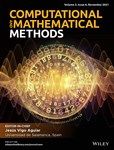An explanation of the Bernstein-Vazirani and Deustch-Josza algorithms with the quantum stabilizer formalism
Funding information: Gobierno del Principado de Asturias, FC-GRUPIN-IDI/2018/000193; FC-GRUPIN-IDI/2018/000226; Ministerio de Ciencia e Innovación, RTI2018-098085-B-C44; Ministerio de Economía, Industria y Competitividad, Gobierno de España, MTM-2017-83506-C2-2-P; Secretaría de Estado de Investigación, Desarrollo e Innovación, MINECO-16-TEC2015-67387-C4-3-R
Abstract
The standard description of a quantum algorithm consists in three steps. First, encoding the data in a suitable initial quantum state. Second, driving such a state by a convenient sequence of unitary transformations until a final quantum state is reached. Third, measuring the final state and use such a measurement to solve the problem the quantum algorithm was designed for. An alternative description is provided by the stabilizer formalism, which was originally introduced in connection with quantum error correcting codes. In this paradigm, the focus is on the subgroup of elements of the Pauli group stabilizing the initial quantum state, and the transformations that such a subgroup experiments along the algorithm. In this work, we provide an explanation of two foundational quantum algorithms (Bernstein-Vazinari and Deustch-Josza) based on such a quantum stabilizer formalism. Doing so, we provide a better understanding and insight into both procedures which yield to see Bernstein-Vazirani as a particular case of Deustch-Josza, and to introduce a generalized version of Deustch-Josza algorithm.
CONFLICT OF INTEREST
The authors declare no potential conflict of interests.




